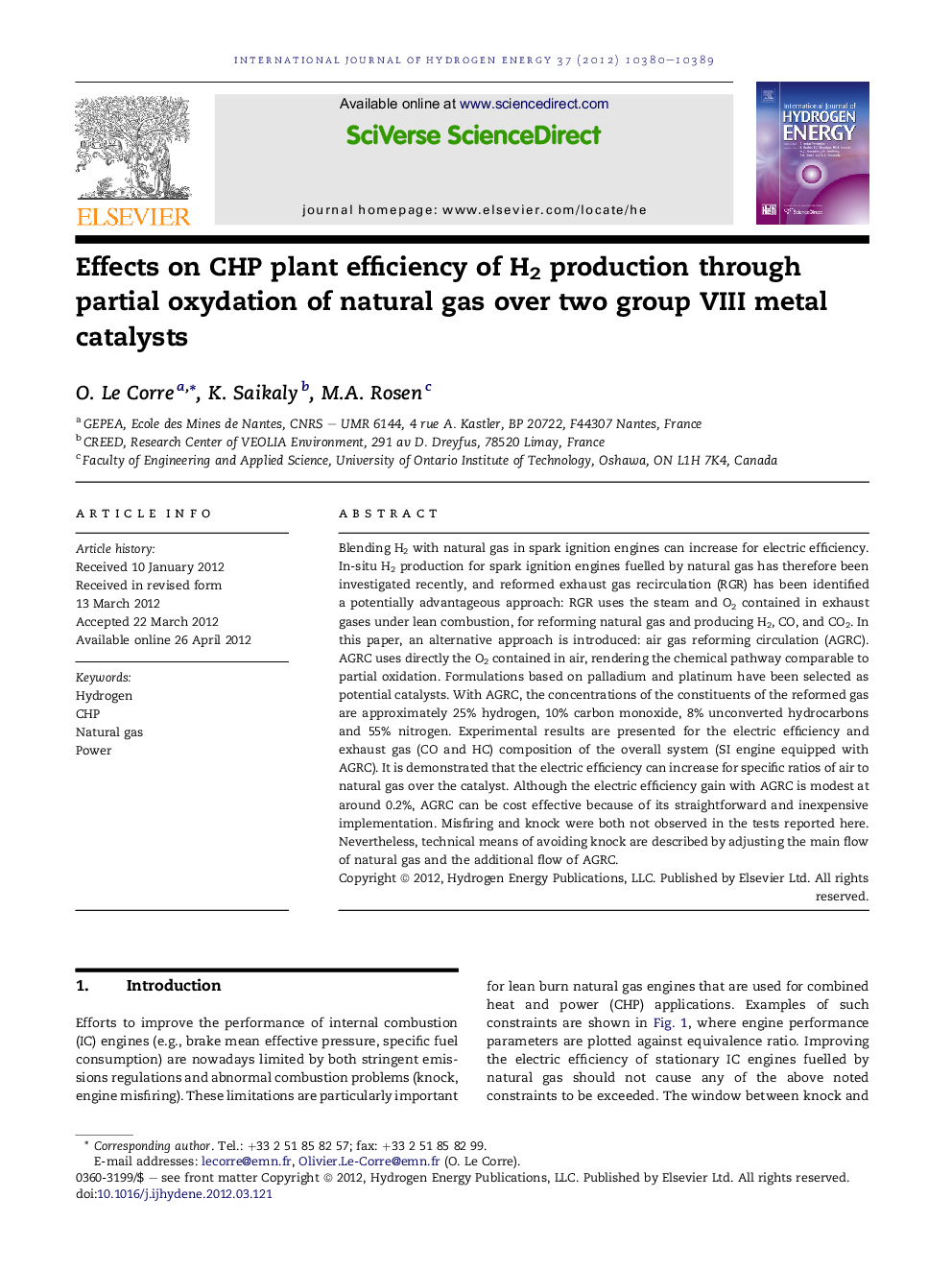| Article ID | Journal | Published Year | Pages | File Type |
|---|---|---|---|---|
| 1275228 | International Journal of Hydrogen Energy | 2012 | 10 Pages |
Blending H2 with natural gas in spark ignition engines can increase for electric efficiency. In-situ H2 production for spark ignition engines fuelled by natural gas has therefore been investigated recently, and reformed exhaust gas recirculation (RGR) has been identified a potentially advantageous approach: RGR uses the steam and O2 contained in exhaust gases under lean combustion, for reforming natural gas and producing H2, CO, and CO2. In this paper, an alternative approach is introduced: air gas reforming circulation (AGRC). AGRC uses directly the O2 contained in air, rendering the chemical pathway comparable to partial oxidation. Formulations based on palladium and platinum have been selected as potential catalysts. With AGRC, the concentrations of the constituents of the reformed gas are approximately 25% hydrogen, 10% carbon monoxide, 8% unconverted hydrocarbons and 55% nitrogen. Experimental results are presented for the electric efficiency and exhaust gas (CO and HC) composition of the overall system (SI engine equipped with AGRC). It is demonstrated that the electric efficiency can increase for specific ratios of air to natural gas over the catalyst. Although the electric efficiency gain with AGRC is modest at around 0.2%, AGRC can be cost effective because of its straightforward and inexpensive implementation. Misfiring and knock were both not observed in the tests reported here. Nevertheless, technical means of avoiding knock are described by adjusting the main flow of natural gas and the additional flow of AGRC.
► Air gas reforming circulation (AGRC), a novel concept for CHP applications, is detailed. ► Palladium and platinum have been selected as potential catalysts. ► AGRC can be cost effective because of its straightforward and inexpensive implementation.
